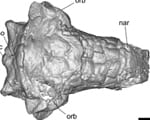Research findings will be presented at the second annual Mission Foods Texas-Mexico Center Symposium to be held in Mexico City April 6, 2018.
The Mission Foods Texas-Mexico Center at SMU has awarded grants to four scholars from both sides of the border who aim to support the Center’s goal of providing policy-relevant, action-oriented research on the dynamic relationship between Texas and Mexico.
Findings from each of the four projects, selected by the Texas-Mexico Center’s Faculty Advisory Board, will be shared this spring, says Luisa del Rosal, executive director of the Center.
“This is a tremendous benefit to Dedman College, where so many faculty members research and teach about Texas and Mexico,” says SMU Dedman College of Humanities and Sciences Dean Thomas DiPiero. “This will help strengthen the social, economic and cultural ties between the two regions.”
The four projects are:
- “Migration, Inequality & Public Policies in Mexico and the United States”
Lead researcher: Colegio de Mexico President Silvia Giorguli, Mexico City- “Are Mexican and U.S. Workers Complements or Substitutes?”
Lead researcher: Raymond Robertson, Helen and Roy Ryu Chair in Economics
& Government, Texas A&M Bush School of Government & Public Service, College Station- “Institutions, Trade and Economic Prosperity: An Examination of the U.S. and Mexican States”
Lead researcher: Dean Stansel, associate professor, O’Neil Center for Global Markets and Freedom, SMU Cox School of Business- “Slowdown in Mexico-U.S. Migration: Why is Texas Different?”
Lead researcher: Colegio Tlaxcala President Alfredo Cuecuecha, Tlaxcala, Mexico
Grant recipient Stansel said his team will focus on the potential economic damage from a possible new regime of trade restrictions in the U.S.
“By examining the interconnected relationships between trade policy, trade volume and economic prosperity in the U.S. and Mexico,” he said, “we hope to provide insights into the importance of maintaining a system of relatively free trade.”
Research findings will be presented at the second annual Mission Foods Texas-Mexico Center Symposium to be held in Mexico City April 6, 2018.
Three dozen applicants applied for the grants, which was “more than we expected for the first year,” says Javier Velez, vice-chair of the Texas-Mexico Center Executive Advisory Board and CEO of Mission Foods’ U.S. headquarters in Dallas.
“It was pleasing for us how much interest there is in effectively promoting and facilitating a better understanding of the relation between Texas and Mexico,” Velez said.
The Mission Foods Texas-Mexico Center at SMU is dedicated to improving relations between Texas and Mexico through dialogue and research. It works to encourage greater cross-border integration and cross-sector collaboration in academia, government, non-governmental organizations and business. The Center strives to enhance a political dialogue to reshape the policies that govern the relationship between Texas and Mexico, focusing on five areas: trade and investment, energy, human capital and education, border issues and migration. — Denise Gee, SMU


 To request an interview with Steven Currall call SMU News and Communications at 214-768-7650 or email SMU News at
To request an interview with Steven Currall call SMU News and Communications at 214-768-7650 or email SMU News at  Early armored dino from Texas lacked cousin’s club-tail weapon, but had a nose for danger
Early armored dino from Texas lacked cousin’s club-tail weapon, but had a nose for danger SMU physicists: CERN’s Large Hadron Collider is once again smashing protons, taking data
SMU physicists: CERN’s Large Hadron Collider is once again smashing protons, taking data Nearby massive star explosion 30 million years ago equaled brightness of 100 million suns
Nearby massive star explosion 30 million years ago equaled brightness of 100 million suns Text in lost language may reveal god or goddess worshipped by Etruscans at ancient temple
Text in lost language may reveal god or goddess worshipped by Etruscans at ancient temple Good news! You’re likely burning more calories than you thought
Good news! You’re likely burning more calories than you thought

 NASA data leads to rare discovery: Earth’s moon wandered off axis billions of years ago
NASA data leads to rare discovery: Earth’s moon wandered off axis billions of years ago Good news! You’re likely burning more calories than you thought
Good news! You’re likely burning more calories than you thought New look at Pizarro’s conquest of Inca reveals foot soldiers were awed by empire’s grandeur
New look at Pizarro’s conquest of Inca reveals foot soldiers were awed by empire’s grandeur Charity, social justice and earth-friendly activism replace big houses, diamond rings and ostentatious living for status seekers
Charity, social justice and earth-friendly activism replace big houses, diamond rings and ostentatious living for status seekers National Center for Arts Research white paper counters findings of the Devos Institute Study on Culturally Specific Arts Organizations
National Center for Arts Research white paper counters findings of the Devos Institute Study on Culturally Specific Arts Organizations Long-term daily contact with Spanish missions triggered collapse of Native American populations in New Mexico
Long-term daily contact with Spanish missions triggered collapse of Native American populations in New Mexico North America’s newest pterosaur is a Texan — and flying reptile’s closest cousin is English
North America’s newest pterosaur is a Texan — and flying reptile’s closest cousin is English California 6th grade science books: Climate change a matter of opinion not scientific fact
California 6th grade science books: Climate change a matter of opinion not scientific fact Reading ability soars if young struggling readers get school’s intensive help immediately
Reading ability soars if young struggling readers get school’s intensive help immediately

 Researchers discover new drug-like compounds that may improve odds for men battling prostate cancer
Researchers discover new drug-like compounds that may improve odds for men battling prostate cancer Fermilab experiment observes change in neutrinos from one type to another over 500 miles
Fermilab experiment observes change in neutrinos from one type to another over 500 miles